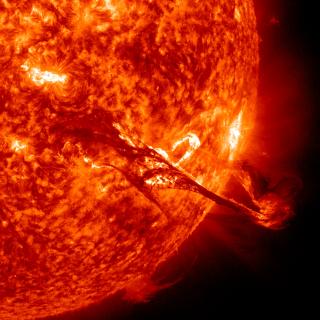Bibcode
Kono, M.; Vranjes, J.
Bibliographical reference
Physics of Plasmas, Volume 22, Issue 11, id.112101
Advertised on:
11
2015
Journal
Citations
0
Refereed citations
0
Description
A fluid theory has been developed by taking account of gyro-viscosity to
study wave propagation characteristics in a homogeneous pair-ion
magnetized plasma with a cylindrical symmetry. The exact dispersion
relations derived by the Hankel-Fourier transformation are shown
comparable with those observed in the experiment by Oohara and
co-workers. The gyro-viscosity is responsible for the change in
propagation characteristics of the ion cyclotron wave from forward to
backward by suppressing the effect of the thermal pressure which
normally causes the forward nature of dispersion. Although the
experiment has been already explained by a kinetic theory by the present
authors, the kinetic derivations are so involved because of exact
particle orbits in phase space, finite Lamor radius effects, and higher
order ion cyclotron resonances. The present fluid theory provides a
simple and transparent structure to the dispersion relations since the
gyro-viscosity is renormalized into the ion cyclotron frequency which
itself indicates the backward nature of dispersion. The usual
disadvantage of a fluid theory, which treats only fundamental modes of
eigen-waves excited in a system and is not able to describe higher
harmonics that a kinetic theory does, is compensated by simple
derivations and clear picture based on the renormalization of the
gyro-viscosity.
Related projects

Solar and Stellar Magnetism
Magnetic fields are at the base of star formation and stellar structure and evolution. When stars are born, magnetic fields brake the rotation during the collapse of the mollecular cloud. In the end of the life of a star, magnetic fields can play a key role in the form of the strong winds that lead to the last stages of stellar evolution. During
Tobías
Felipe García